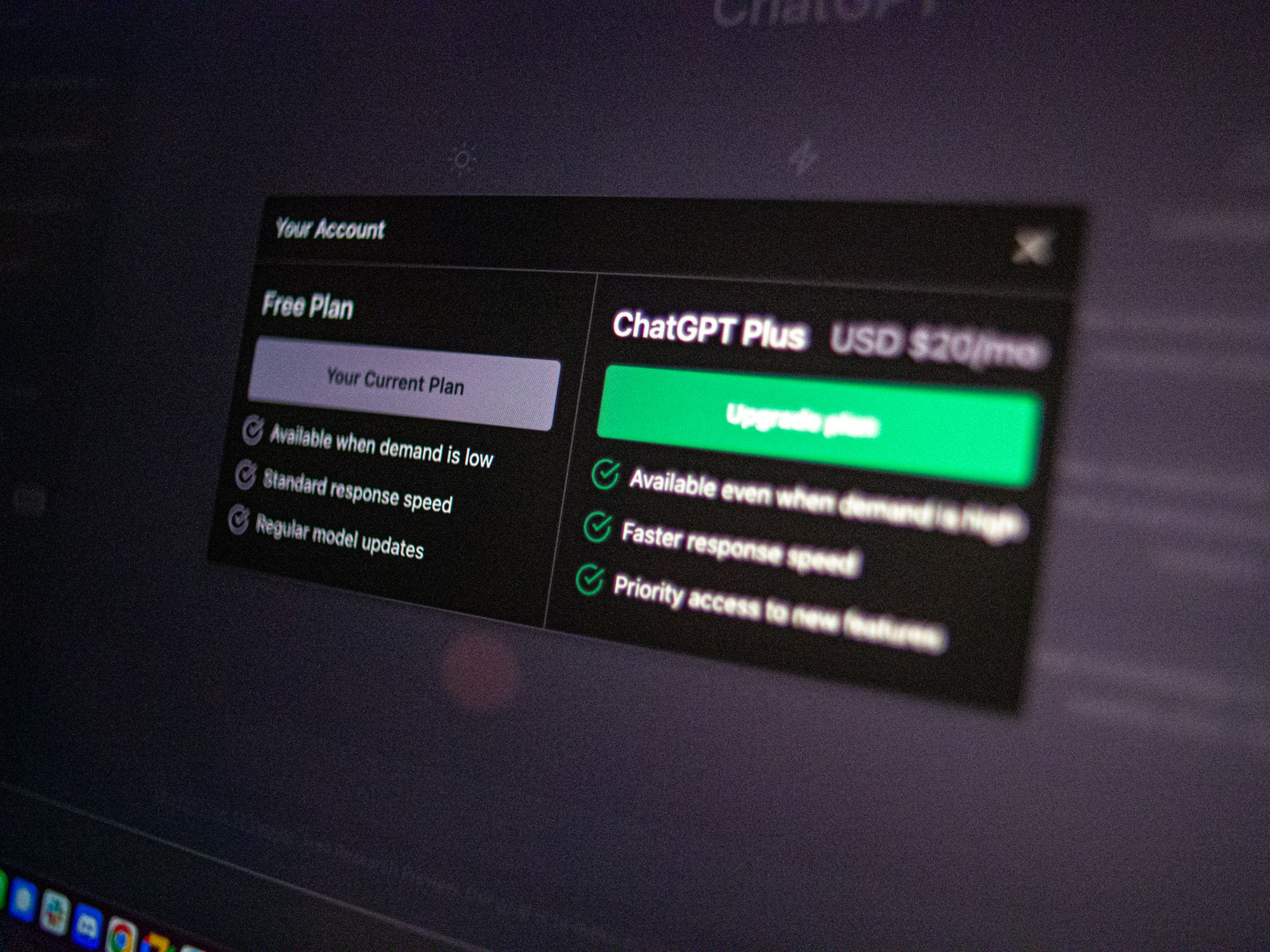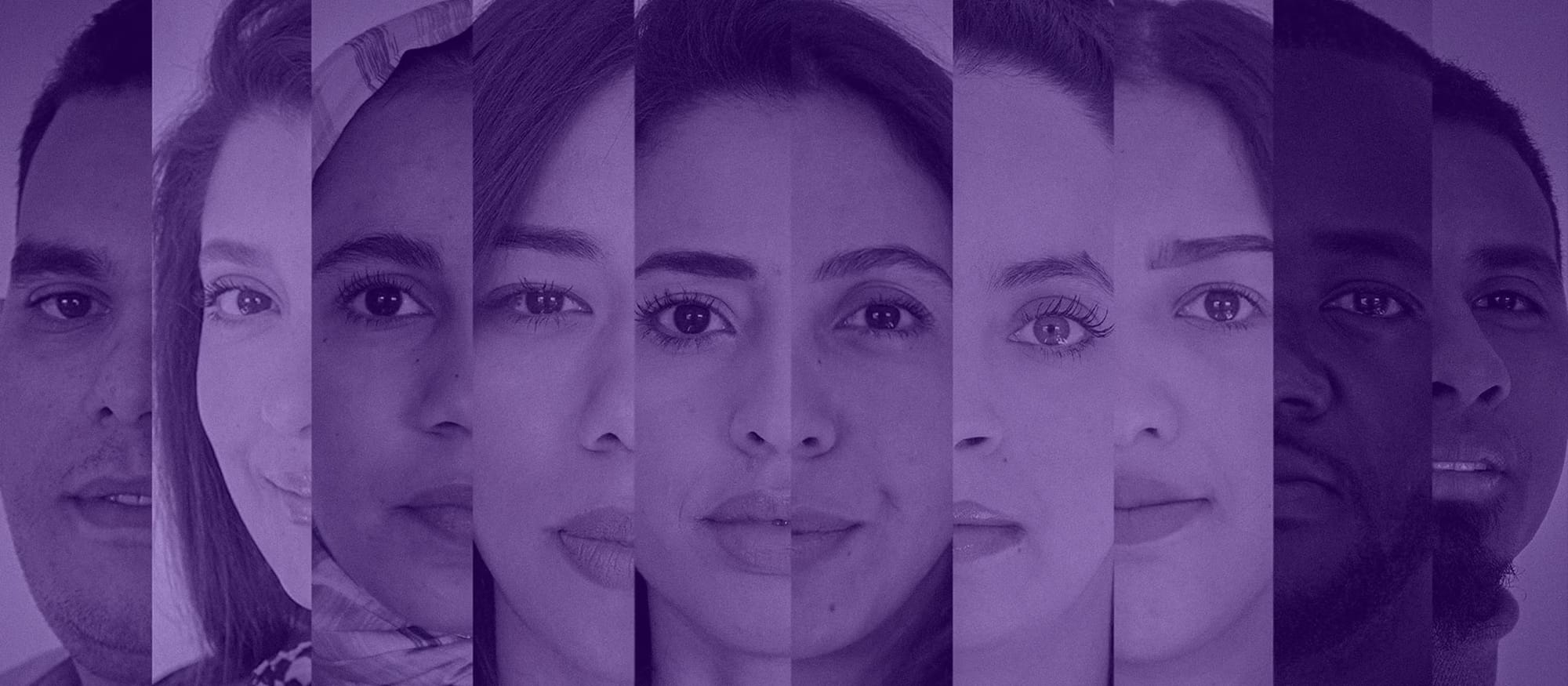Loyal customers have a significant impact on businesses:
- They spend 67% more than new customers
- They actively recommend brands to friends and family
- They're less affected by price changes
- They provide valuable feedback for improvement
Reward programs have become powerful tools that turn occasional shoppers into brand advocates. These initiatives offer benefits to customers while fostering connections between brands and their audience.
Modern reward programs have evolved beyond basic point collection systems. They now use advanced technology, personalized approaches, and multi-channel experiences to meet changing consumer expectations. Brands use these programs to:
- Track customer behavior and preferences
- Deliver personalized experiences
- Create emotional connections
- Drive repeat purchases
- Generate valuable customer data
This article explores how reward programs are transforming customer engagement strategies. You'll discover different program types, successful case studies, and emerging trends shaping the future of customer loyalty initiatives. From points-based systems to value-driven rewards, we'll uncover the key elements that make these programs effective tools for building lasting customer relationships.
Understanding Customer Loyalty and Its Business Impact
Customer loyalty is when customers consistently choose one brand over others. This connection, both in their minds and actions, leads to measurable business success through increased customer lifetime value and steady revenue growth.
The Importance of Customer Loyalty
Loyal customers are valuable for businesses. They not only make repeat purchases but also have a positive impact on various aspects of the business. Here are some reasons why customer loyalty is important:
- Increased Spending: Loyal customers tend to spend more compared to new customers. According to research, loyal customers spend 67% more than new customers.
- Higher Profits: Retaining existing customers can significantly boost profits. Studies show that a 5% increase in customer retention can lead to a profit increase of 25-95%.
- Better Sales Conversion: Existing customers are more likely to make a purchase compared to new prospects. The probability of selling to an existing customer is 60-70%, while it is only 5-20% for new prospects.
- Participation in Loyalty Programs: Many consumers actively engage in retail loyalty programs. In fact, 77% of consumers participate in such programs.
The Financial Impact of Customer Loyalty
Customer loyalty has a broader financial impact beyond just direct purchases. Here are some ways it can benefit a business:
Revenue Amplification
- Reduced marketing costs through word-of-mouth referrals
- Higher average order values from repeat customers
- Decreased price sensitivity among loyal customers
- Protected market share during competitive challenges
Customer Retention Benefits
- Lower acquisition costs for sustained business growth
- Predictable revenue streams from repeat purchases
- Enhanced brand advocacy and positive reviews
- Valuable customer feedback for product improvement
Distinct Spending Patterns of Loyal Customers
Loyal customers exhibit specific spending behaviors that differentiate them from other customers:
"Engaged customers buy 90% more frequently, spend 60% more per transaction, and are 5x more likely to choose the brand for future purchases" - Rosetta Consulting Study
How Loyalty Drives Business Growth
The link between customer loyalty and business growth becomes clear through several factors:
- Increased cross-selling opportunities
- Higher customer referral rates
- Greater resistance to competitive offerings
- Improved customer feedback participation
Advantages of Strong Loyalty Programs
Companies with robust loyalty programs enjoy significant benefits:
- Better market performance
- Higher customer satisfaction scores
- Stable revenue generation
These advantages compound over time as loyal customers become brand advocates, creating a self-reinforcing cycle of business growth.
Types of Customer Reward Programs
Customer reward programs come in distinct varieties, each designed to meet specific business objectives and customer preferences. Let's explore the four main types dominating the market:
1. Points-Based Programs
- Customers earn points for every purchase
- Standard conversion rates (e.g., $1 = 1 point)
- Points redeemable for products, services, or discounts
- Digital tracking through apps or membership cards
- Example: Walgreens Balance Rewards offers 1 point per $1 spent
2. Tiered Programs
- Status levels based on customer spending or engagement
- Bronze, Silver, Gold structure common in retail
- Higher tiers unlock exclusive benefits
- Creates aspirational goals for customers
- Example: Airlines' frequent flyer programs with escalating perks
3. Paid Membership Programs
- Upfront fee for immediate premium benefits
- Unlimited access to specific services
- Free shipping, exclusive deals, early access
- Bundle multiple benefits into one subscription
- Example: Amazon Prime's combination of shipping, streaming, gaming
4. Value-Based Programs
- Focus on social responsibility and ethical consumption
- Environmental or charitable contributions
- Community-building initiatives
- Appeals to conscious consumers
- Example: TOMS' One for One giving model
Each program type serves different customer motivations:
- Points-based systems appeal to deal-seekers and regular shoppers.
- Tiered programs attract status-conscious consumers who value recognition.
- Paid memberships work best for frequent users seeking convenience.
- Value-based programs connect with socially conscious customers prioritizing impact over personal rewards.
Businesses often customize these models to create unique programs. Some combine multiple types, like REI's membership program that includes both paid membership benefits and points earning opportunities. The key lies in selecting program elements that align with your customer base's preferences and shopping behaviors.

Successful Examples of Reward Programs in the Market
Leading brands demonstrate the power of well-executed loyalty programs through innovative approaches and compelling value propositions. Let's examine four standout programs that have revolutionized customer engagement:
1. Starbucks Rewards
- Two-tier system: Green and Gold levels
- Mobile app integration for seamless ordering and payment
- Stars earned on purchases unlock free drinks and food items
- Birthday rewards and exclusive member events
- Real-time personalized offers based on purchase history
- Digital games and challenges for bonus stars
2. Sephora Beauty Insider
- Three-tier structure: Insider, VIB, and Rouge
- Points redeemable for premium beauty products
- Exclusive access to beauty classes and workshops
- Private shopping events for top-tier members
- Online beauty community participation
- Early access to product launches and seasonal sales
3. Amazon Prime
- Free two-day shipping on millions of items
- Prime Video streaming service
- Prime Music and Prime Reading
- Prime Gaming benefits
- Prime Day exclusive deals
- Amazon Fresh grocery delivery
- Try Before You Buy clothing service
4. The North Face XPLR Pass
- Points earned through purchases and activities
- Unique outdoor experiences as rewards
- Limited edition product access
- Guided adventure trips
- Exclusive access to athlete events
- Sustainability-focused initiatives
- Special access to product testing programs
These programs showcase different approaches to customer engagement:
- Starbucks: Drives daily interaction through its mobile-first strategy.
- Sephora: Creates an exclusive beauty community that rewards both spending and participation.
- Amazon: Combines multiple services into one valuable membership.
- The North Face: Connects with customers through shared values and experiences.
Each program demonstrates how understanding customer preferences and behaviors leads to meaningful rewards that drive long-term loyalty. Their success lies in creating value beyond traditional discounts, building emotional connections with customers through personalized experiences and community engagement.
Key Features That Make Reward Programs Effective
Successful reward programs share essential characteristics that drive customer engagement and long-term loyalty. Here's what makes these programs truly effective:
1. Clear Value Proposition
- Transparent reward structures that customers easily understand
- Attainable rewards that match customer expectations
- Immediate visibility of progress toward rewards
- Real-world value that justifies customer participation
2. Simplified User Experience
- Quick enrollment process requiring minimal information
- Instant reward access through digital platforms
- Single-click redemption options
- Clear progress tracking systems
3. Personalization Elements
- Customized rewards based on purchase history
- Birthday perks and milestone celebrations
- Tailored communications matching customer preferences
- Special offers aligned with individual shopping patterns
4. Emotional Connection Builders
- Early access to new products or services
- Exclusive member-only events
- Recognition of customer milestones
- Community building through shared experiences
5. Seamless Integration
- Consistent experience across mobile apps and websites
- In-store recognition of online rewards
- Real-time synchronization of points and benefits
- Universal reward redemption across all channels
A reward program's success lies in its ability to blend these features while maintaining simplicity. Programs that overwhelm users with complex rules or delayed gratification risk losing engagement. The key is creating a balance between valuable rewards and user-friendly mechanics.
Modern customers expect their loyalty programs to work effortlessly across all touchpoints. Whether shopping online, using a mobile app, or visiting a physical store, the experience should feel unified and friction-free. This seamless integration helps build trust and encourages regular program participation.
Personalization plays a crucial role in program effectiveness. When customers receive relevant rewards and communications, they're more likely to stay engaged. Data shows that personalized loyalty programs generate 5-10% higher revenue compared to standard offerings.
The Role of Technology in Enhancing Reward Programs
Digital innovation has changed the way brands connect with their loyal customers. Mobile applications are powerful tools for managing reward programs, putting loyalty benefits directly in customers' pockets. These apps allow for real-time point tracking, instant reward redemption, and seamless digital payment integration.
Mobile-First Features That Drive Engagement:
- Digital wallet integration for contactless transactions
- Push notifications for personalized offers
- QR code scanning for instant point collection
- Virtual loyalty cards that eliminate plastic
- Location-based rewards and store finder functionality
Gamification elements turn traditional point collection into an interactive experience. Brands use achievement systems, progress bars, and virtual badges to create a sense of accomplishment. Starbucks has gamified challenges where customers earn bonus stars for trying new products, while Nike Run Club rewards users with badges for reaching fitness milestones.
Popular Gamification Techniques:
- Digital badges for milestone achievements
- Interactive challenges and missions
- Community leaderboards
- Progress tracking visualizations
- Virtual rewards and collectibles
Technology-driven loyalty management systems give brands powerful data analytics capabilities. These platforms track customer behavior patterns, purchase history, and engagement metrics in real-time. Advanced algorithms analyze this data to predict customer preferences and optimize reward offerings.
Benefits of Digital Loyalty Management:
- Automated reward distribution
- Real-time performance tracking
- Fraud prevention mechanisms
- Multi-channel integration capabilities
- Advanced customer segmentation
Artificial Intelligence improves program effectiveness by identifying spending patterns and predicting future behavior. Machine learning algorithms customize reward offerings based on individual customer preferences, creating highly targeted incentives that drive engagement.
The integration of blockchain technology opens up new possibilities for secure point tracking and transparent reward distribution. Some brands now offer cryptocurrency rewards or NFT collectibles as innovative loyalty incentives, appealing to tech-savvy customers seeking unique digital assets.

Personalization and Customer Engagement Strategies
Modern reward programs thrive on data-driven personalization. By analyzing customer behavior patterns, brands create hyper-targeted experiences that resonate with individual preferences and shopping habits.
Behavioral Data Analysis
- Purchase history tracking reveals product preferences
- Shopping frequency patterns indicate optimal engagement times
- Category interests guide promotional content
- Price sensitivity analysis shapes discount strategies
- Customer lifetime value determines reward tiers
Sophisticated loyalty platforms transform raw behavioral data into actionable insights. These systems identify specific customer segments, enabling brands to craft personalized rewards that drive engagement.
Effective Targeting Techniques
- Birthday rewards customized to past purchases
- Location-based offers through mobile apps
- Product recommendations based on browsing history
- Personalized reward thresholds aligned with spending patterns
- Custom messaging that reflects individual interests
Real-time personalization creates meaningful connections with customers. When Sephora notices a customer frequently purchasing skincare products, they automatically adjust their rewards to feature exclusive skincare launches or early access to related collections.
Impact on Customer Behavior
- 79% higher redemption rates for personalized offers
- 2.5x increase in customer engagement
- 40% boost in repeat purchase frequency
- Enhanced emotional connection to brands
- Improved customer satisfaction scores
Brands like Starbucks exemplify successful personalization by suggesting drinks based on previous orders and weather conditions. Their app learns user preferences, sending push notifications for relevant happy hour deals and bonus star opportunities.
Artificial intelligence enhances these personalization efforts by:
- Predicting future purchase behavior
- Identifying at-risk customers
- Optimizing reward timing
- Automating personalized communication
- Adjusting offers based on response rates
This data-driven approach creates a virtuous cycle - better personalization leads to increased engagement, generating more behavioral data for even more precise targeting.
Combining Multiple Program Types for Greater Impact
Modern businesses understand that customers have different preferences and reasons for being loyal. To cater to this diversity, they are adopting hybrid loyalty models that combine various types of programs. This approach allows them to create reward systems that are more appealing and inclusive.
Benefits of Multi-Program Integration:
- Increased participation rates across different customer segments
- Higher perceived value through varied reward options
- Enhanced flexibility in reward redemption
- Stronger competitive advantage through unique program combinations
- Greater data collection opportunities for customer insights
Successful Hybrid Approaches in Action
Here are some examples of brands successfully implementing hybrid loyalty strategies:
Nordstrom
Nordstrom exemplifies effective hybrid loyalty implementation by combining:
- Points-based rewards for regular purchases
- Tiered benefits for high-value customers
- Credit card integration with additional perks
- Early access to sales events
- Personal stylist services at premium tiers
DSW's VIP Program
DSW's VIP Program demonstrates multi-benefit success through:
- Traditional points earning system
- Free shipping benefits
- Birthday rewards
- Charitable donation options
- Surprise bonus points events
Creating Deeper Customer Connections
Multi-benefit strategies strengthen customer relationships by:
- Addressing Different Value PropositionsImmediate rewards for transaction-focused customers
- Status benefits for prestige-seeking members
- Social impact options for value-driven consumers
- Enhancing Program FlexibilityMultiple redemption pathways
- Choice between instant or accumulated rewards
- Options to combine different reward types
- Building Comprehensive EngagementIn-store experience enhancement
- Digital platform integration
- Social media connectivity
- Community participation opportunities
Brands implementing hybrid models report 39% higher customer satisfaction rates and a 45% increase in program participation compared to single-format programs. These integrated approaches create robust ecosystems where customers find multiple reasons to stay engaged with the brand.

Challenges and Considerations When Implementing Reward Programs
Creating successful reward programs requires careful planning to avoid common pitfalls that can diminish their effectiveness. Companies must navigate several critical challenges to maintain program sustainability and customer engagement.
Program Complexity
- Complex redemption rules frustrate customers and reduce participation rates
- Multiple tiers with unclear advancement criteria create confusion
- Intricate point calculation systems discourage active engagement
- Customers abandon programs they find difficult to understand
Cost Management Strategies
- Program expenses can outweigh revenue benefits without proper planning
- Hidden costs include:
- Technology infrastructure
- Staff training
- Marketing communications
- Reward fulfillment
- Regular ROI assessment helps maintain program viability
- Setting clear budget parameters prevents unsustainable reward offerings
Preventing Customer Fatigue
- Repetitive rewards lead to decreased program engagement
- Static benefit structures fail to maintain long-term interest
- Limited reward options reduce program appeal
- Solutions include:
- Rotating seasonal rewards
- Surprise perks
- Exclusive member experiences
- Varied redemption options
Data Privacy Concerns
- Customer data collection raises privacy issues
- Programs must comply with regulations like GDPR and CCPA
- Transparency about data usage builds trust
- Essential privacy measures include:
- Secure data storage
- Clear opt-in/opt-out options
- Regular security audits
- Limited data sharing with third parties
Companies implementing reward programs need robust monitoring systems to track these challenges. Regular program audits help identify areas requiring adjustment. Successful programs maintain a balance between providing value to customers and ensuring business sustainability.
Future Trends in Customer Loyalty Programs
AI-Driven Personalization
AI-driven personalization is leading the way in the evolution of loyalty programs. With the help of machine learning algorithms, businesses can now accurately predict customer preferences like never before. This allows for highly personalized reward suggestions that align with each individual's shopping habits. These intelligent systems are capable of adapting in real-time, making adjustments to offers based on factors such as customer behavior, location, and even weather conditions.
Sustainability-Focused Rewards
Sustainability-focused rewards have become increasingly popular:
- Carbon offset points for eco-friendly purchases
- Tree planting initiatives tied to spending levels
- Rewards for bringing reusable containers
- Points multipliers for choosing green delivery options
Shift Towards Experiential Incentives
There has been a noticeable shift away from traditional discount-based rewards towards experiential incentives. Brands are now offering:
- Virtual reality shopping experiences
- Exclusive cooking classes with celebrity chefs
- Behind-the-scenes access to product launches
- Limited-edition collaborations with artists
Blockchain Technology for Reward Tracking
Blockchain technology is playing a crucial role in enabling transparent reward tracking and seamless point transfers between partner programs. Smart contracts are being used to automate reward distribution, resulting in lower administrative costs and improved program efficiency.
Emerging AI Applications in Loyalty Programs
Several emerging applications of AI are set to enhance loyalty programs further:
- Chatbots providing 24/7 support for reward programs
- Voice-activated point checking through smart speakers
- Predictive analytics for personalized timing of rewards
- Real-time adjustments to rewards based on inventory levels
Social Media Integration and Community-Driven Loyalty
The integration of social media into loyalty programs is creating new opportunities for customers to earn points through user-generated content, reviews, and social sharing. These platforms are fostering community-driven loyalty ecosystems where members have the power to influence and inspire each other's purchasing decisions.
Conclusion
Customer reward programs have evolved from basic points systems to advanced tools that promote business growth. These programs succeed because they foster genuine connections between brands and consumers through tailored experiences, meaningful rewards, and smooth interactions.
Well-designed loyalty initiatives yield concrete outcomes for companies:
- Increased customer retention rates
- Higher average purchase values
- Strong brand advocacy
- Valuable customer data insights
To fully leverage these benefits, it is crucial to develop programs that:
- Align with customer values and preferences
- Deliver clear, attainable rewards that motivate ongoing engagement
- Leverage technology to enhance user experience
- Adapt to changing market dynamics and consumer expectations
As businesses continue to innovate their reward strategies, those who focus on creating authentic, value-driven programs will build lasting customer relationships and maintain competitive advantage in an increasingly crowded marketplace.
FAQs (Frequently Asked Questions)
What is customer loyalty and why is it important for business growth ?
Customer loyalty refers to the ongoing preference and repeat business from customers, which significantly impacts business growth by increasing customer lifetime value and driving consistent revenue streams.
How do different types of customer reward programs work to enhance loyalty ?
Reward programs such as points-based systems, tiered programs, paid memberships, and value-based initiatives engage customers by offering incentives tailored to their preferences, motivating higher engagement and fostering long-term retention.
Can you provide examples of successful reward programs in the market ?
Successful programs include Starbucks Rewards' points system, Sephora Beauty Insider's tiered approach with exclusive perks, Amazon Prime's paid membership benefits, and The North Face XPLR Pass offering unique experiential rewards—all demonstrating effective strategies to boost customer loyalty.
What key features make a customer reward program effective ?
Effective reward programs offer clear and valuable incentives, ease of use with fast gratification, personalization that enhances relevance, emotional connections through meaningful rewards, and seamless omnichannel integration across online and offline platforms.
How does technology enhance the effectiveness of reward programs ?
Technology enhances reward programs through mobile apps for convenient tracking and redemption, gamification elements like badges and leaderboards to boost engagement, and digital point tracking systems that streamline loyalty management.
What future trends are shaping customer loyalty programs ?
Emerging trends include AI-driven personalization for enhanced relevance, sustainability-focused rewards appealing to ethical consumers, and experiential incentives that offer unique value beyond traditional discounts, all aimed at deepening customer engagement.





